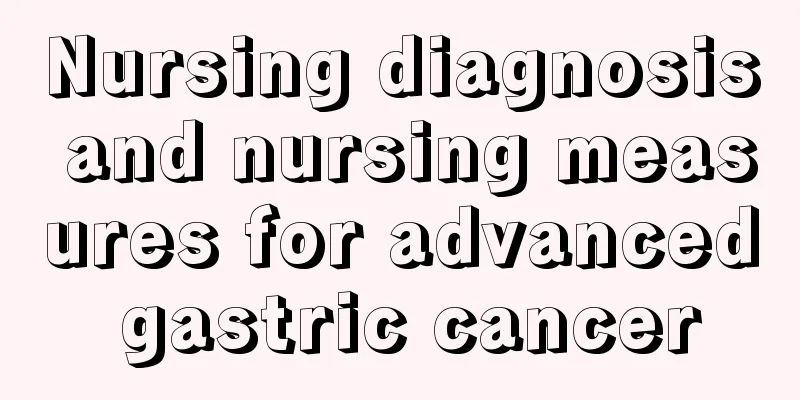What are the symptoms of myocardial infarction?

|
Myocardial infarction is actually a highly prevalent disease. In the past, this disease mainly occurred in the elderly. However, in recent years, more and more young people have also suffered from myocardial infarction. This is mainly related to their living habits or working hours. Long-term heavy workload can easily lead to physical illness. Patients with myocardial infarction generally experience symptoms of irritability and sweating. Clinical manifestations About half of the patients with acute myocardial infarction have prodromal symptoms 1 to 2 days or 1 to 2 weeks before the onset of the disease. The most common ones are aggravation of existing angina pectoris, prolonged attack time, or decreased response to nitroglycerin; or sudden onset of prolonged angina pectoris in those who have never had angina pectoris in the past. Typical symptoms of myocardial infarction include: 1. Sudden onset of severe and persistent squeezing pain behind the sternum or in the precordial area Rest and sublingual nitroglycerin cannot provide relief and are often accompanied by irritability, sweating, fear, or a sense of impending death. 2. A small number of patients have no pain The initial symptoms are shock or acute heart failure. 3. Some patients experience pain in the upper abdomen It may be misdiagnosed as acute abdomen such as gastric perforation and acute pancreatitis. A small number of patients experience pain in the neck, mandible, pharynx and teeth, which can be easily misdiagnosed. 4. Mental disorder Can be seen in elderly patients. 5. Systemic symptoms Indescribable malaise and fever. 6. Gastrointestinal symptoms Symptoms include nausea, vomiting, abdominal distension, etc., which are more common in patients with inferior wall myocardial infarction. Acute myocardial infarction occurs suddenly and should be detected and treated early, with strengthened pre-hospitalization treatment. The principles of treatment are to save the dying myocardium, reduce the area of infarction, protect heart function, and deal with various complications in a timely manner. 1. Monitoring and general treatment Patients without complications should stay in bed for 1 to 3 days during the acute phase; receive oxygen; and undergo continuous ECG monitoring to observe changes in heart rate, heart rhythm, blood pressure, and respiration. For patients with hypotension or shock, monitor capillary wedge pressure and venous pressure when necessary. Low salt, low fat, eat small meals frequently, and keep bowel movements regular. After 3 days, patients without complications gradually transitioned to sitting in a chair next to the bed to eat, urinate, and move around indoors. Patients can usually be discharged from the hospital within 2 weeks. For patients with heart failure, severe arrhythmias, hypotension, etc., the bed rest time and discharge time need to be extended as appropriate. 2. Sedation and pain relief Small doses of intravenous morphine are the most effective analgesic; pethidine can also be used. Those who are irritable and nervous can be given diazepam (Valium) orally. 3. Adjust blood volume Establish intravenous access as soon as possible after admission, and slowly replenish fluids in the first 3 days, paying attention to the balance of intake and output. 4. Reperfusion therapy to reduce infarct area Reperfusion therapy is the main treatment measure for acute ST-segment elevation myocardial infarction. Opening the blocked coronary artery and restoring blood flow within 12 hours of onset can reduce the area of myocardial infarction and reduce mortality. The earlier the coronary artery is reopened, the greater the benefit to the patient. "Time is myocardium, time is life." Therefore, a diagnosis must be made as soon as possible for all patients with acute ST-segment elevation myocardial infarction, and a reperfusion therapy strategy must be developed as soon as possible. |
<<: What are some tips for using honey at home
>>: What are the symptoms of Still's disease?
Recommend
Homemade Natural Hair Dye
Hair dyeing is a very common thing. Many people l...
What to do if you eat hair
In life, it is easy for us to eat some hair for v...
How to make middle-parted hair look good
Among the hairstyles people choose, some have ban...
Lumbar arch bridge efficacy
Due to the nature of many people's work and l...
What is the reason for a hard lump next to the anus?
The hard lump next to the anus may be caused by h...
Can patients with prostate cancer eat mangoes? What effects do mangoes have on patients with prostate cancer?
Now many people may say that gastric cancer is a ...
Lymphoma cancer exercise recovery measures
In addition to conventional treatments, there are...
Clinical features of pancreatic cancer
Pancreatic cancer is often diagnosed at an advanc...
What are the diagnostic steps for small cell lung cancer
What are the diagnostic steps for small cell lung...
What are the early symptoms of lung cancer in women
Lung cancer in women may not have any symptoms in...
When is the best time to brush your teeth at night?
Whether to brush teeth before or after meals has ...
How is prostate cancer caused? What are the health care measures for patients during recovery?
Prostate cancer is a very serious disease for men...
What is the reason for high crystallinity in urine routine test
If the urine routine shows high crystals, we shou...
Are walnut kernels useful?
With the rise of the health craze, more and more ...
The difference between grapefruit and orange
Citrus can be said to be the most common fruit in...









